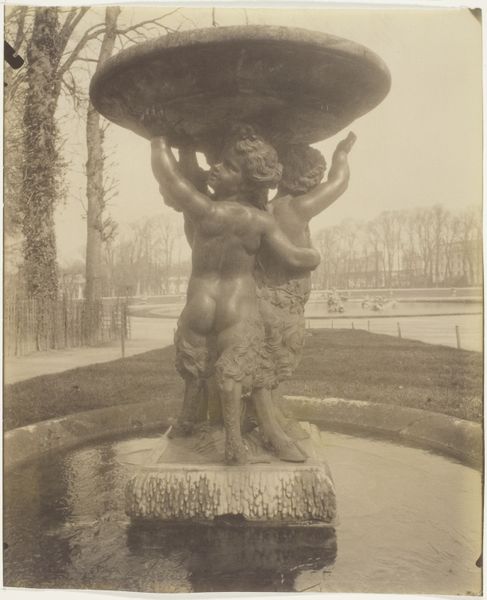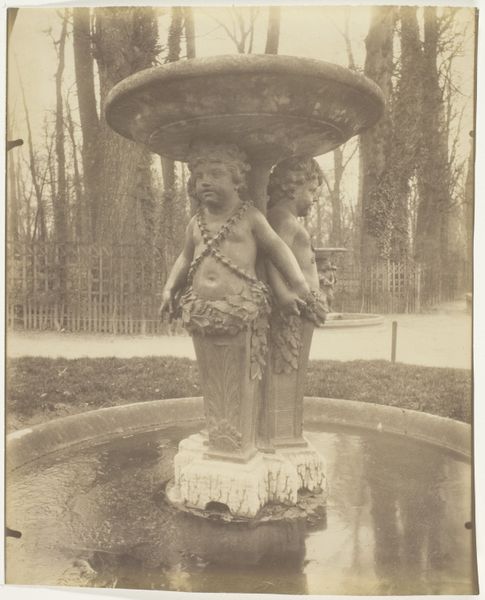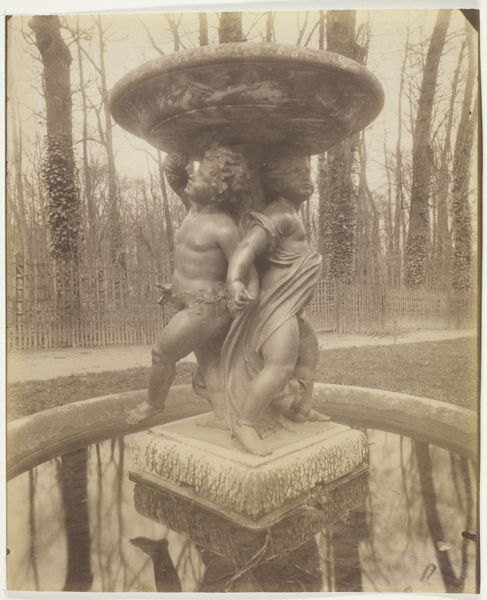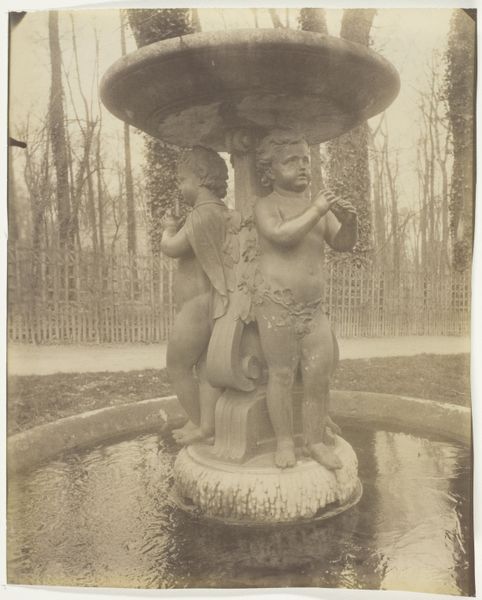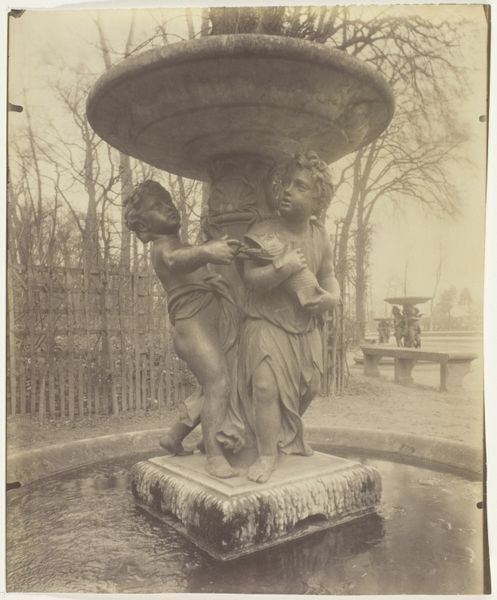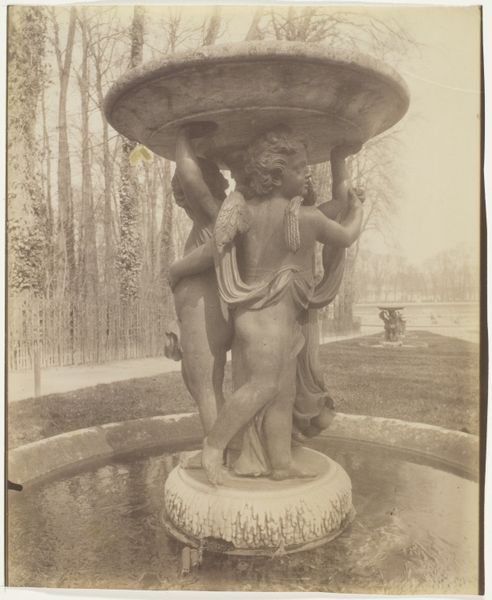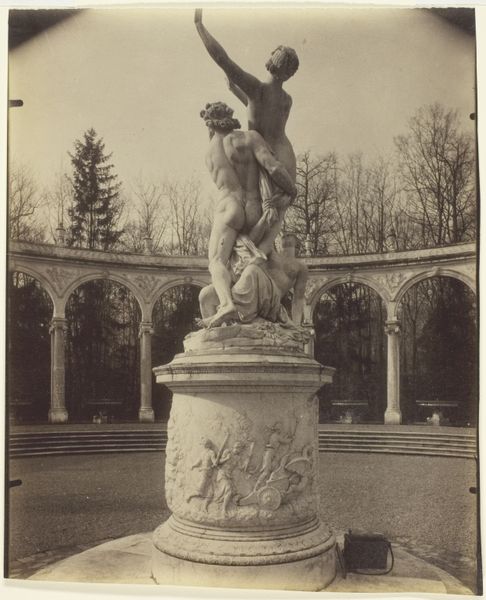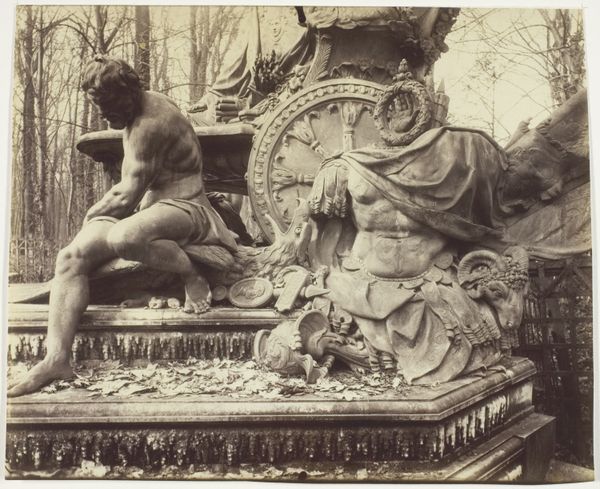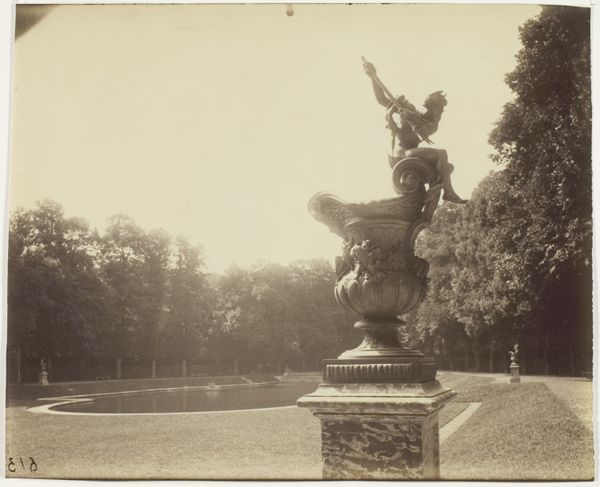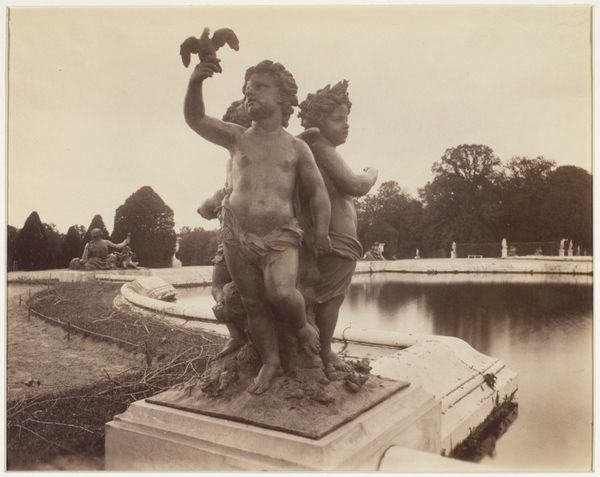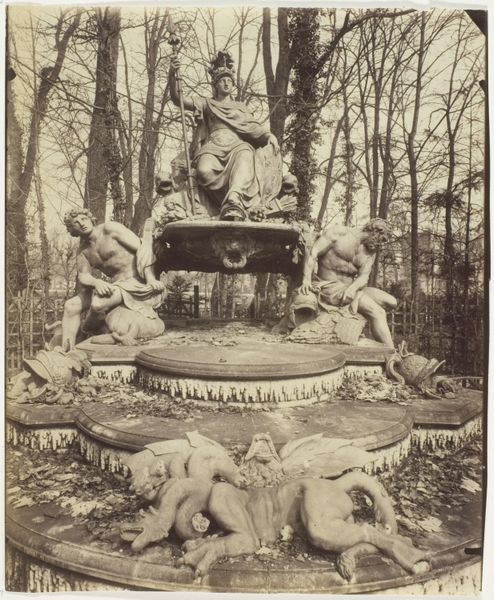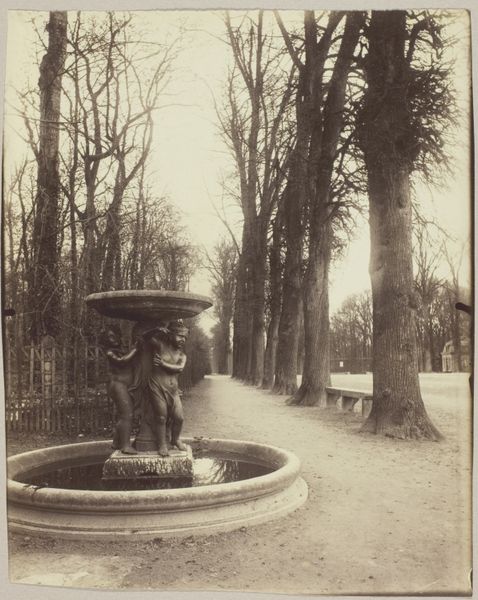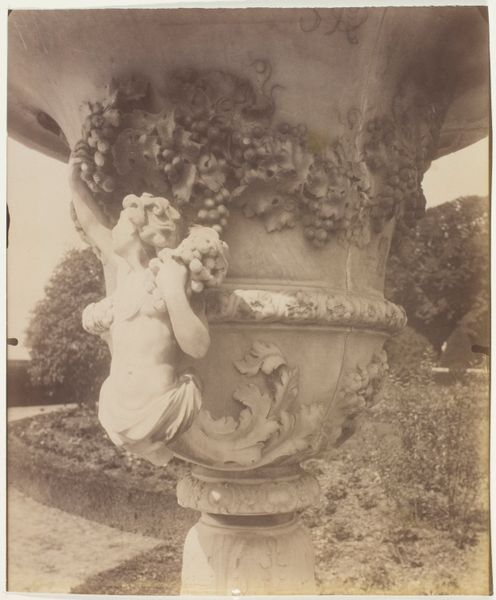
Dimensions: 22 × 17.6 cm (image); 22 × 17.9 cm (paper)
Copyright: Public Domain
Curator: Eugène Atget’s "Versailles, Le Parc," taken in 1906. A gelatin silver print currently residing at the Art Institute of Chicago. What are your first thoughts? Editor: Melancholy. The tones are muted, almost sepia, giving it a hazy, dreamlike quality. That little bronze cherub fountain—it’s lovely but carries a strange weight of vanished grandeur. Like a ghost of parties past. Curator: Interesting. Atget's images were rooted in a very practical commercial purpose, initially, he sought to create a documentary archive of Parisian architecture and life. These prints were sold to artists, architects, and libraries. How does the lens through which the artist viewed the scene inform your reaction? Editor: Knowing that, I still can't shake the feeling of decay—not physical rot, but an emotional fading. He wasn't just recording buildings; he was capturing a mood. Versailles, by that point, must have held so many stories of transformation and disruption in France... It makes me wonder what other forces of labor transformed its parks and gardens? Curator: Atget photographed aspects of a rapidly changing urban landscape. He documented storefronts and architectural details—elements directly affected by commerce and modernity, his decision to concentrate his gaze at Versailles seems a step apart from documenting "ordinary life". Perhaps this interest stems from anxieties of modernity or, in contrast, desires for upward social mobility in fin-de-siècle France? Editor: Absolutely, this makes sense. Seeing how light touches the bronze, the way the water distorts reflections. He transformed functional documentation into a kind of…poetic archive? I can imagine standing there, trying to reconstruct that past while being completely anchored in the present. This really makes you stop to think. Curator: Considering it was also a commodity to be purchased also plays with the dynamic of accessibility for different consumers and creators. Atget walked a line of artist and artisan, navigating his context. The park as the great theater. It seems to reveal the many levels embedded in such places and practices. Editor: Yes, a theater of both power and transience, caught in a single frame. Thank you, my viewing of this archive will change how I reflect and interact in urban space. Curator: And thank you, these additional dimensions allow for critical appreciation of how photographs participate and make sense of these many facets.
Comments
No comments
Be the first to comment and join the conversation on the ultimate creative platform.
